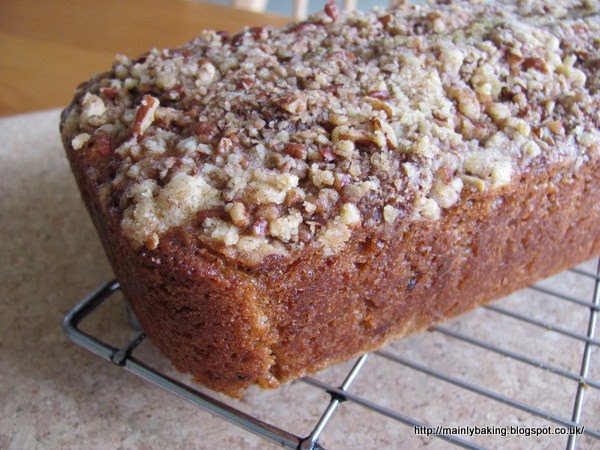I went to my first Clandestine Cake Club meeting recently; I joined the organisation almost a year ago, but this is the first local event that has been arranged since then. The theme for the cakes was Alice in Wonderland, and the meeting was called, appropriately, a Mad Hatter's Tea Party.
I have to admit I was thrown a bit by the theme; I'd hoped just to bake something with spectacular flavours, but my cake was obviously going to need some decoration too. I haven't decorated a novelty cake since my youngest child stopped having that sort of birthday cake about 25 years ago, so I approached the task with some trepidation. After seeing lots of 'bunny bottoms' on cupcakes while I was researching the theme (basically using Google Images!), I decided to make a large version using my bundt tin as the basis of the rabbit hole, with a fondant icing white rabbit disappearing down into it. Making the back end of a rabbit seemed infinitely easier than making a whole rabbit or even the front end of one, especially as the White Rabbit in Alice in Wonderland was dressed, and carried a watch!
I choose the flavours for the cake to fit in with the 'tea party' theme by using green tea and chocolate layers in a marble cake, and flavouring the chocolate layer with chilli too, as an extra 'madcap' idea. I used my favourite recipe for a marbled bundt cake - the reduced size version of this Alice Medrich recipe which I use here. For this version I used sunflower oil instead of olive oil, and added almost half a teaspoon of cayenne pepper to the cocoa mixture and two tablespoons of green tea powder to the plain layer.
The decorations were made from fondant icing and edible wafer flowers, plus two chocolate 'bunny paws'. I needed the best part of 500g of fondant icing sugar to make enough modelling fondant to fill the hole and make the legs and tail of the rabbit, and 250g of green ready to roll fondant for the grass and flower leaves. The top photo was taken before I roughed up the 'tail' by cutting into the fondant ball with a pair of scissors to make it look more like fur - it was quite an effective technique, as you can see in the photo to the left.
Neither of the cake flavours were overwhelming, and the bitterness of the green tea was nicely balanced by the lingering warmth of the chilli and the sweetness of the fondant icing. It was fortunate that I didn't use too much chilli, as many of the Cake Club participants were mothers who had brought their young children along (something I hadn't expected!).
 This was a small meeting, although a few more cakes arrived after I'd taken my photos. The theme was quite loosely interpreted, so I needn't have worried about not doing enough! The gorgeous pink and purple Cheshire Cat cake was flavoured with almonds and rosewater, and was really delicious, and there were two other cakes using tea - a fruited tea loaf and an Earl Grey loaf with lemon icing. I also got to bring home slices of the cakes that I was too full to sample during the meeting, so I think the only thing I didn't taste at all was the strawberry tart.
This was a small meeting, although a few more cakes arrived after I'd taken my photos. The theme was quite loosely interpreted, so I needn't have worried about not doing enough! The gorgeous pink and purple Cheshire Cat cake was flavoured with almonds and rosewater, and was really delicious, and there were two other cakes using tea - a fruited tea loaf and an Earl Grey loaf with lemon icing. I also got to bring home slices of the cakes that I was too full to sample during the meeting, so I think the only thing I didn't taste at all was the strawberry tart.


























